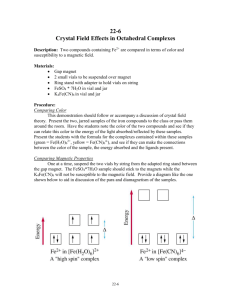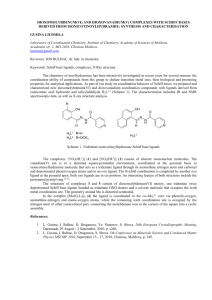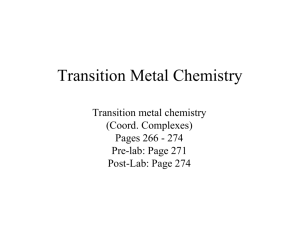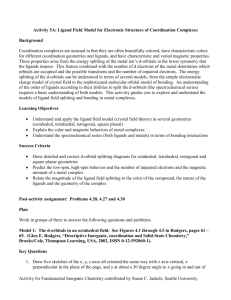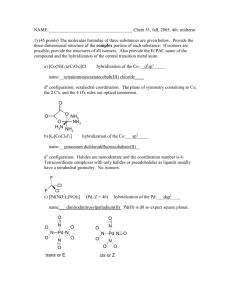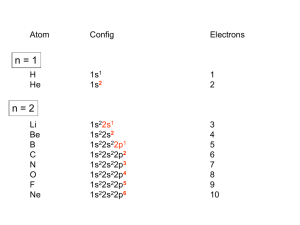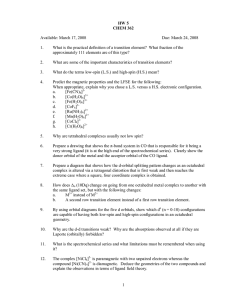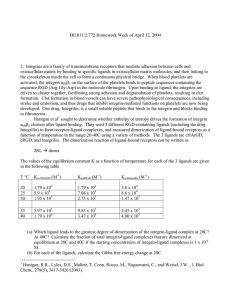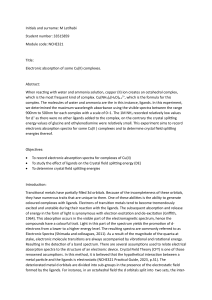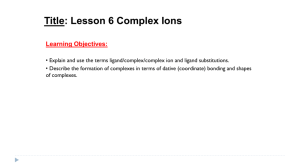Document
advertisement
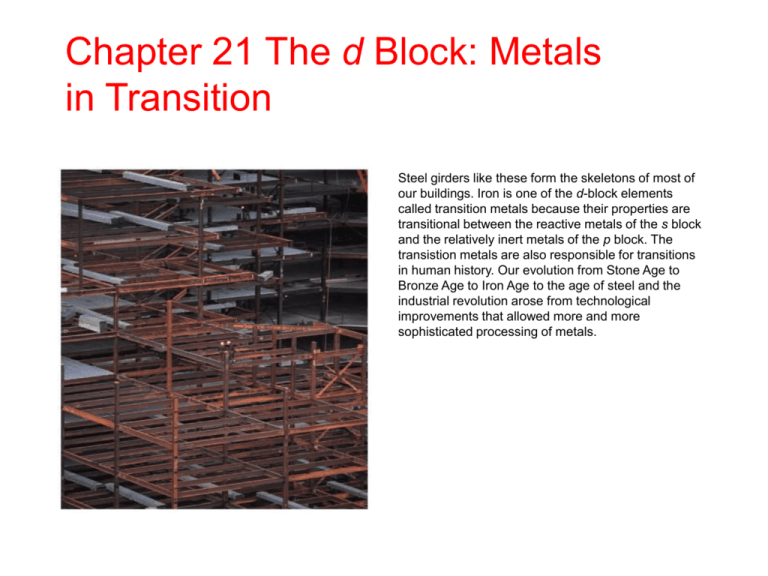
Chapter 21 The d Block: Metals in Transition Steel girders like these form the skeletons of most of our buildings. Iron is one of the d-block elements called transition metals because their properties are transitional between the reactive metals of the s block and the relatively inert metals of the p block. The transistion metals are also responsible for transitions in human history. Our evolution from Stone Age to Bronze Age to Iron Age to the age of steel and the industrial revolution arose from technological improvements that allowed more and more sophisticated processing of metals. Figure 21.35 In a crystal of ruby, Cr3 ions take the place of some Al3 ions in the alumina crystal; each Cr3 ion is surrounded by an octahedron of oxide ions. Figure 21.36 In the crystal field theory of complexes, the lone pairs of electrons (the Lewis base sites) on the ligands (a) are treated as equivalent to point negative charges (b). Figure 21.37 In an octahedral complex with a central d-metal atom or ion, a dxy-orbital is directed between the ligand sites, and an electron that occupies it has a relatively low energy. The same lowering of energy occurs for dyz- and dzxorbitals. A dz2-orbital points directly toward two ligands, and an electron that occupies it has a relatively high energy. The same rise in energy occurs for a dx2y2-electron. Figure 21.38 The energy levels of the d-orbitals in (a) an octahedral complex, with the ligand field splitting O, and (b) in a tetrahedral complex, with the ligand field splitting T. Each box (that is, orbital) can hold two electrons. Figure 21.39 When a complex is exposed to light of the correct frequency, an electron can be excited to a higher energy orbital (from t to e if the complex is octahedral), and the light is absorbed. Figure 21.40 The spectrochemical series. Strong-field ligands give rise to a large splitting between the t- and e-orbitals, whereas weak-field ligands give rise to only a small splitting. The horizontal line marks the frontier between the two kinds of ligands. The change in color of the bar represents the increasing energy of light absorbed as the field strength increases. Figure 21.41 The perceived color of a complex in white light is the complementary color of the light it absorbs. In this color wheel, complementary colors are opposite each other. The numbers are approximate wavelengths in nanometers. Figure 21.42 The effect of changing the ligands in octahedral cobalt(III) complexes in aqueous solution. The ligand field strengths increase from left to right. Figure 21.43 The electron configurations of d-metal complexes. The circled number gives the number of unpaired electrons. Figure 21.44 The magnetic character of a complex can be studied with the apparatus shown here, which is called a Gouy balance. (a) A sample is hung from a balance so that it lies partly between the poles of an electromagnet. (b) When the magnetic field is turned on, a paramagnetic sample is drawn into it, so the sample seems to weigh more. (c) In contrast, a diamagnetic sample is pushed out of the field when the field is turned on, so it seems to weigh less. Figure 21.45 (a) A strong-field ligand is likely to lead to a low-spin complex (in this case, the configuration is that of Fe3). (b) A weak-field ligand is likely to result in a high-spin complex. Assignment for Chapter 21

